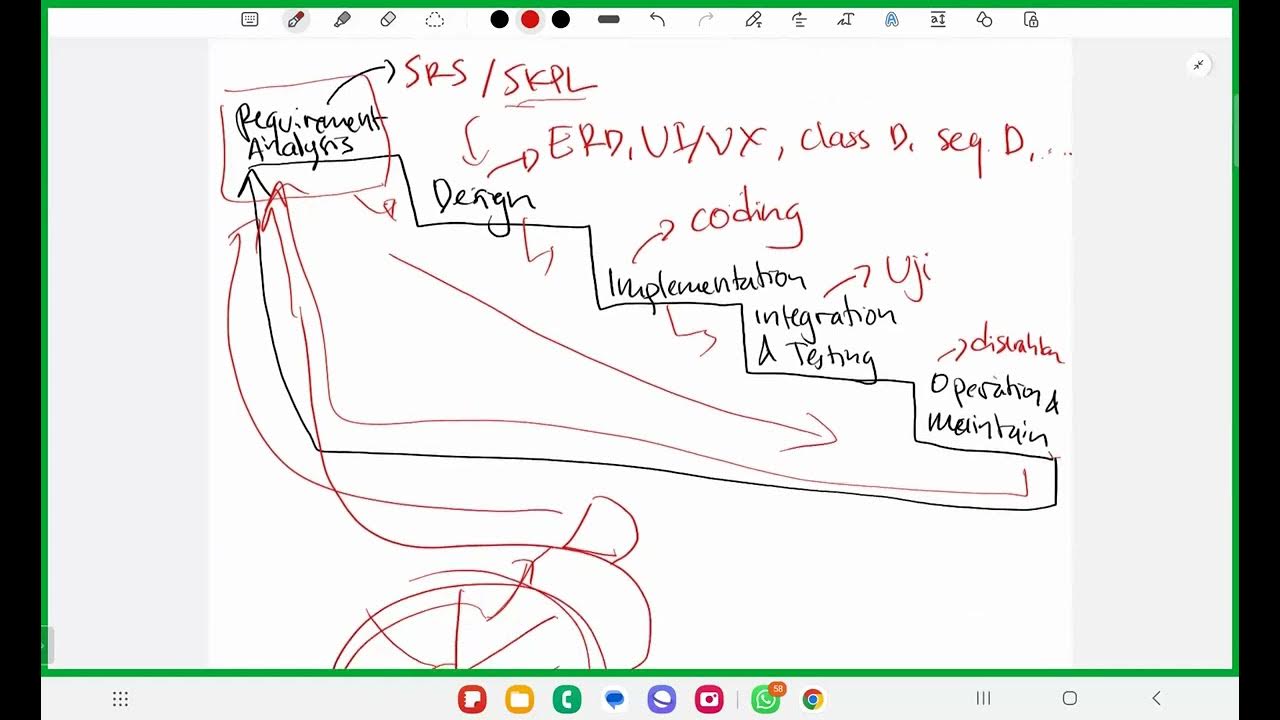SCRUM Model in Software Engineering | Agile Technology
Summary
TLDRThe video introduces the SCRUM model in software engineering, a widely-used Agile framework adopted across industries like software, banking, and pharmaceuticals. Inspired by rugby, SCRUM promotes teamwork to tackle complex projects. It's lightweight, iterative, and focuses on 'sprints'—short, time-bound development cycles lasting 2-4 weeks. The video highlights SCRUM's emphasis on communication, flexibility, and customer satisfaction. Key roles include the scrum master and product owner, with daily meetings to ensure progress. Advantages include reduced development time and high-quality products, though it's more suited for small teams. SCRUM remains popular for its adaptability and efficiency.
Takeaways
- 🏉 SCRUM is an agile development model inspired by the rugby game, where teams work together to solve complex problems.
- 🔁 SCRUM is a lightweight, iterative, and incremental model, making it adaptable across industries beyond IT, including research, sales, marketing, and banking.
- ⏱️ The concept of 'sprints' in SCRUM refers to time-bound development cycles, typically lasting between 2 weeks and 1 month.
- 👥 A SCRUM team consists of a Scrum Master, Product Owner, and developers, all working together with constant communication to complete tasks.
- 📊 Backlog is a key concept in SCRUM, where requirements, designs, and tasks are documented and prioritized.
- 🕒 Daily SCRUM meetings last 10-15 minutes, where team members and stakeholders discuss progress and address any issues.
- 💡 SCRUM promotes equality and freedom among team members, allowing everyone, regardless of role, to contribute ideas and solutions.
- 🚀 The main advantage of SCRUM is that it allows for the creation of high-quality products with reduced development time, by focusing on completing sprints one at a time.
- 💼 SCRUM emphasizes customer satisfaction through frequent reviews and demonstrations, allowing for quick adjustments between sprints.
- 👥 SCRUM is more suited for smaller teams, as it eliminates hierarchy, making it difficult to implement in larger teams or organizations.
Q & A
What is the SCRUM model in software engineering?
-The SCRUM model is a lightweight, iterative, and incremental software development framework that comes under agile methodology. It is designed to break down the development process into stages called sprints.
What are the origins of the SCRUM model?
-The SCRUM model's idea is derived from rugby, where players form a tight formation with their heads down to capture the ball. Similarly, in SCRUM, developers work together to solve complex problems in a collaborative way.
In what industries is SCRUM used?
-SCRUM is widely used in various industries, including software development, banking, sales, marketing, pharmaceutical, and research. Companies like Google, Facebook, Amazon, HSBC, and Bank of America use it.
What is a sprint in the SCRUM model?
-A sprint is a time-boxed development cycle, typically lasting 2 weeks to 1 month, where a specific set of work is completed. After each sprint, there is a review to assess progress before moving on to the next sprint.
How does SCRUM manage time in development?
-SCRUM is highly time-bound, requiring the team to focus maximum efforts on completing tasks within a sprint's limited time. The goal is to maximize efficiency and minimize development time by focusing on one sprint at a time.
Who are the key members of a SCRUM team?
-A SCRUM team consists of a scrum master, product owner, and developers. The scrum master oversees the process, communicates with stakeholders, and ensures the team stays on track, while the product owner represents the client’s needs.
What is a backlog in SCRUM?
-A backlog is a list of requirements, tasks, and designs that need to be implemented in the project. It is created in collaboration with stakeholders, developers, and the product owner during meetings.
What is a daily scrum meeting?
-A daily scrum is a short 10-15 minute meeting where the team, including developers and stakeholders, discusses progress and challenges for the day. It keeps everyone aligned on the project's progress.
What are some advantages of using SCRUM?
-SCRUM offers several advantages, including flexibility in adapting new ideas, faster product development, reduced development time by up to 40%, and a strong focus on customer satisfaction with continuous reviews.
What are some disadvantages of using SCRUM?
-SCRUM can be challenging to implement in large teams due to the lack of hierarchy, making it more suitable for small teams. Additionally, once a sprint begins, changes can't be made until the sprint is complete.
Outlines

Этот раздел доступен только подписчикам платных тарифов. Пожалуйста, перейдите на платный тариф для доступа.
Перейти на платный тарифMindmap

Этот раздел доступен только подписчикам платных тарифов. Пожалуйста, перейдите на платный тариф для доступа.
Перейти на платный тарифKeywords

Этот раздел доступен только подписчикам платных тарифов. Пожалуйста, перейдите на платный тариф для доступа.
Перейти на платный тарифHighlights

Этот раздел доступен только подписчикам платных тарифов. Пожалуйста, перейдите на платный тариф для доступа.
Перейти на платный тарифTranscripts

Этот раздел доступен только подписчикам платных тарифов. Пожалуйста, перейдите на платный тариф для доступа.
Перейти на платный тарифПосмотреть больше похожих видео
5.0 / 5 (0 votes)






